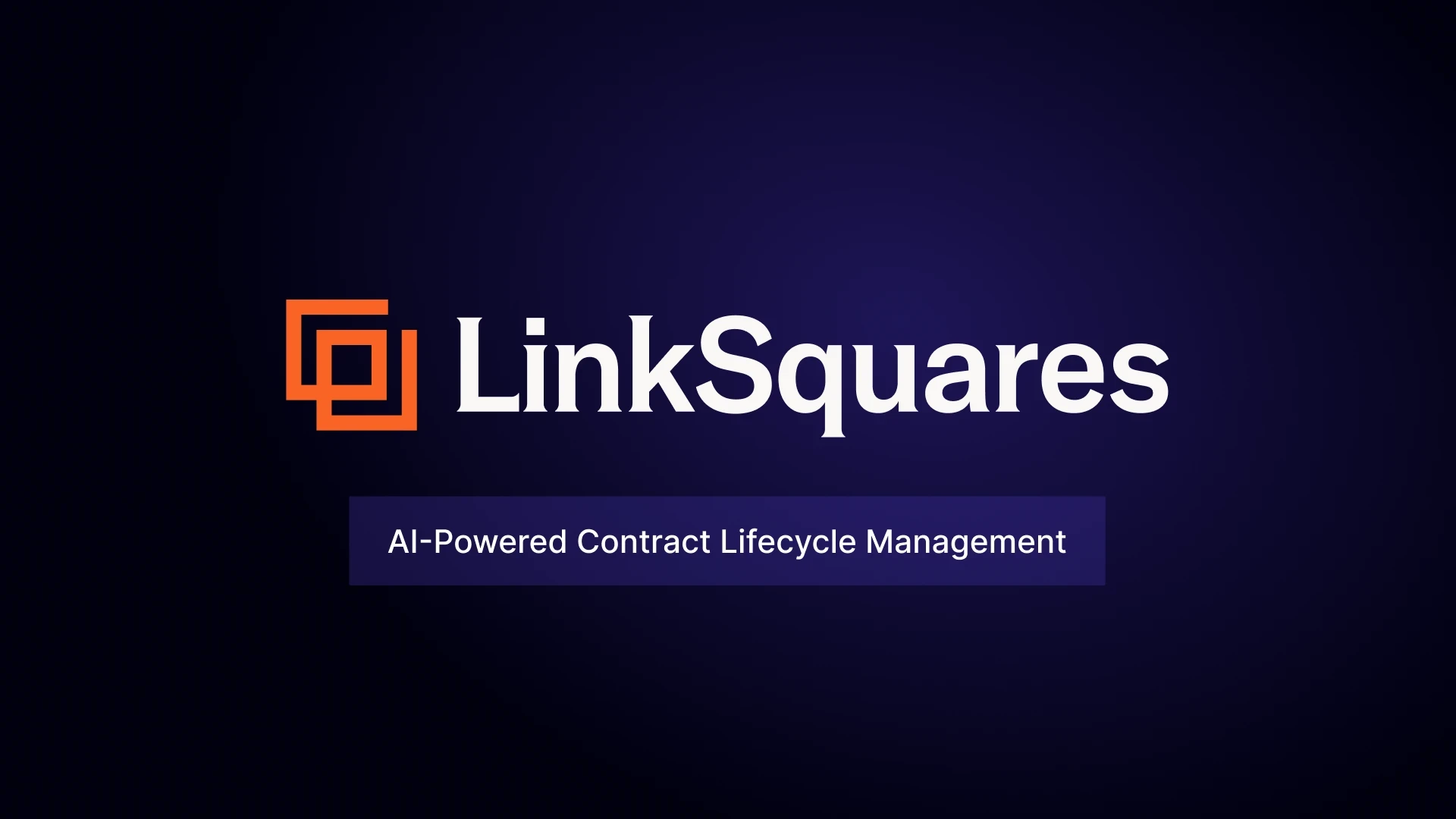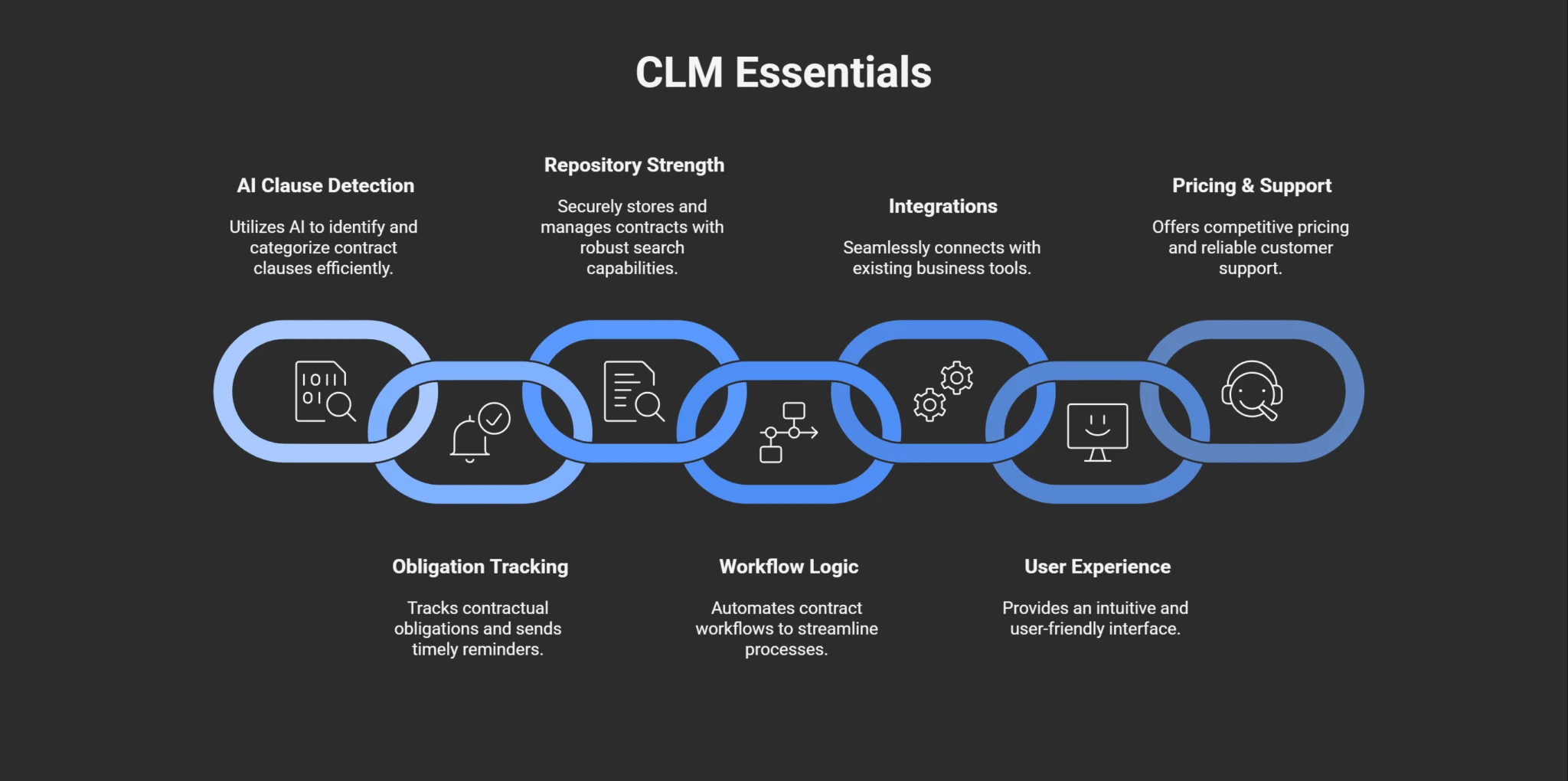Krunal Shah
Sep 9, 2025
In 2025, every CLM promises AI, automation, and seamless workflows. But for legal ops teams at scaling companies, what matters is how a platform actually performs—under real conditions, with real contracts.
So, I put LinkSquares through its paces: real use cases, actual contract volume, multi-level approvals—no fluff, just a proper trial.
How I Set Up My Review

Too many CLM evaluations focus on shiny demos, but I took a hands-on approach. I built out a sandbox environment that mirrored our company’s real-world complexity—think hundreds of in-flight and archived contracts, multiple approval teams, frequent redlines, and tight turnaround cycles.
My Structure:
Created a simulated legal ops environment: Structured for a mid-sized tech company with active procurement, sales, and legal workflows.
Uploaded 200+ contracts: Including NDAs, MSAs, custom partner agreements, legacy scanned PDFs, and redlined drafts.
Rebuilt sample approval flows: For Legal, Finance, Sales, and Procurement teams with custom thresholds and reviewer rules.
Applied a detailed evaluation matrix: Using a checklist of 25+ real-world requirements drawn from our operational needs.
LinkSquares Evaluation Checklist: What To Look For

Before testing any platform, I clearly defined our non-negotiables—features that weren’t just nice-to-haves but essential for adoption, compliance, and productivity. Here's the matrix I used:
Category | Why It Matters | What I Looked For |
|---|---|---|
AI Clause Detection | Speed + legal accuracy | Smart fallback clauses, reliable redlines |
Obligation Tracking | Missed renewals = lost revenue | Multi-version tracking, timely alerts |
Repository Strength | Find answers fast | Accurate tagging, advanced search filters |
Workflow Logic | Adapt to changing business needs | True no-code builder, conditional routing |
Integrations | Cross-functional flow | Salesforce, DocuSign, Slack, Outlook |
User Experience | Drives adoption | Minimal training, intuitive UI |
Pricing & Support | Long-term sustainability | Transparent quotes, no-SOW onboarding |
Every decision was mapped back to these priorities.
Related Article: LinkSquares Alternative: Volody’s Advanced Edge 2025
Days 1–3: LinkSquares Setup & First Impressions

Initial Setup: Spinning up the sandbox was fast. Within a few hours, I had login access, a clean-looking dashboard, and a pre-configured contract view. So far, so good.
But friction came fast.
Smart Values setup was surprisingly manual. Despite being advertised as a highlight, clause tagging and template building required a separate services package.
Documentation was light. Especially around configuring AI redlining, fallback clause logic, or creating your own clause playbooks.
Workflow assignment pain: I built out a sample approval flow with multi-step routing. But users weren’t automatically notified of their roles in the process. I had to manually ping approvers to test routing behavior—far from ideal.
Days 4–6: Repository, Import Testing, and Metadata Accuracy

Bulk Import: I uploaded 125 legacy contracts in varying formats—scanned PDFs, older MSAs, and signed NDAs—into the contract repository. LinkSquares imported them relatively quickly, but the accuracy was uneven.
Around 30% of contracts had incorrect or missing renewal terms**.**
Signature date extraction was hit or miss. Only ~50% were correctly identified.
Some clauses were missed entirely or mismatched due to format inconsistencies.
Search performance: The search interface is fast and technically robust, but highly dependent on search filters. Without adjusting proximity or fuzzy logic settings, users often got false positives or missed key clauses entirely.
Manual cleanup: What should’ve been a 2-hour task turned into a full-day exercise of fixing clause tags and reviewing system assumptions. The metadata engine just wasn’t trustworthy without oversight.
Related Article: Contract Repository: How to Set it Up Effectively?
Days 7–8: Real-World CLM Workflows & Business Logic Testing

Workflow Builder Limitations:
LinkSquares provides templated routing but lacks a true drag-and-drop builder.
Conditional logic like "If contract > $250K, route to CFO" required scripting or admin intervention.
This meant business users couldn’t make changes themselves. Even minor updates to routing logic had to go through me, which isn’t sustainable when Sales wants agility and Finance has shifting thresholds.
Status Tracking: The UI does show where a contract sits in the process, which is helpful. But midstream edits—like adding an approver mid-way—weren’t allowed. Restarting the workflow was often the only option.
Related Article: Summize Review 2025: Can This CLM Handle Real Legal Work?
Days 9–10: AI Redlining and Obligation Detection in LinkSquares

LinkAI Performance:
It flagged some missing boilerplate (Limitation of Liability, Termination for Convenience).
But suggested fallback language often lacked nuance—not aligned with how our in-house team typically negotiated.
Clause recognition struggles:
It misread layered indemnity structures, failing to understand which clause superseded what.
If we had custom clause libraries or industry-specific language, the AI needed retraining—not ideal for fast-paced legal ops teams.
Obligation Management:
Renewal reminders were inconsistent.
In contracts with multiple amendments, the system sometimes surfaced old terms instead of the latest version—raising compliance concerns.
At this point, I realized I was spending more time verifying the AI than trusting it.
Related Article: Contract Redlining: What is it and How to do It?
The Hidden Costs: Support, Pricing, and Admin Burden

Opaque Pricing:
Pricing wasn’t shared upfront. We had to go through several calls just to get estimates.
Core features like bulk import, clause library support, or advanced AI required separate add-ons.
The onboarding process required a Statement of Work (SOW)—a red flag for fast-growing teams that need to launch quickly.
Support Delays:
Our customer success rep was responsive, but overworked.
Small config issues or metadata adjustments often took 48+ hours to resolve.
Want to add a new field to the contract view? That’s a service ticket.
Admin Overhead:
Clause library maintenance, AI configuration, metadata corrections—all demanded ongoing admin work.
This made it harder to justify the investment for a lean legal team looking to do more with less.
Related Article: Top Contract Management Tips for Legal Professionals
What do others say?
"LinkSquares talked big about AI but it looked subpar given the current AI capabilities. The pricing was not reflective of their offering" - Anonymous user - Reddit
The LS team, are very sharp in understanding our requirement. The interface is without folders. Difficulty in accessing contracts when need is urgent. - Associate GC (Source G2)
This may seem very odd, but the name eludes me at times - can't seem to connect it with what the system does. The only thing I wish the system offered, in the base offering, is the ability to leverage more key words / key terms for look-up. - Head of Legal (Source Capterra)
Related Article: LinkSquares Pricing: Worth the Investment for Legal in 2025
Why I Chose Volody Instead
After 10 days with LinkSquares, the decision was clear. It wasn’t a bad tool, it just wasn’t built for fast-scaling, multi-department teams like ours**.** So we evaluated Volody next.
Here’s why we made the switch:
AI That Learns: Mapped fallbacks to our standards and improved with every redline.
No-Code Workflows: Drag-and-drop flows are editable midstream by any team—no IT needed.
Instant Metadata: Contracts were searchable in under 60 minutes with clause-level visibility.
Transparent Pricing: Tiered plans with flat onboarding—no hidden fees or surprise SOWs.
Fast Implementation: Went live in under 6 days with real-time, legal-trained support.
Seamless Integrations: Synced with Salesforce, DocuSign, ERPs, and Google Docs for full data flow.
Built-In Obligation Tracking: Dashboards, reminders, and audit trails ensure nothing gets missed.
Quote from our rollout lead:
“Volody took our 300-contract backlog and made it searchable, tagged, and redlined in under a week. We didn’t expect to move this fast.”
Final Thoughts
LinkSquares has strengths, especially in structured data environments, audit trails, and templated workflows. But if you’re leading legal ops at a high-growth company with frequent contract changes, evolving business needs, and lean staffing, you need more than just a contract archive.
Volody gave us fast time to value, usable AI from day one, and tools that empowered other teams to work independently. That meant legal could finally focus on strategy instead of managing redline queues or fixing metadata errors.
About the Company
Volody AI CLM is an Agentic AI-powered Contract Lifecycle Management platform designed to eliminate manual contracting tasks, automate complex workflows, and deliver actionable insights. As a one-stop shop for all contract activities, it covers drafting, collaboration, negotiation, approvals, e-signature, compliance tracking, and renewals. Built with enterprise-grade security and no-code configuration, it meets the needs of the most complex global organizations. Volody AI CLM also includes AI-driven contract review and risk analysis, helping teams detect issues early and optimize terms. Trusted by Fortune 500 companies, high-growth startups, and government entities, it transforms contracts into strategic, data-driven business assets.








